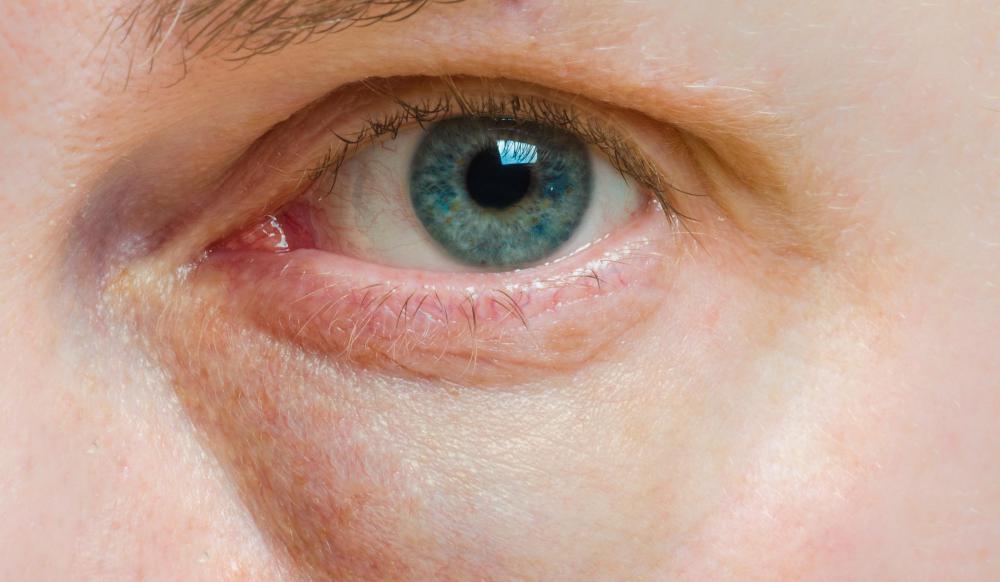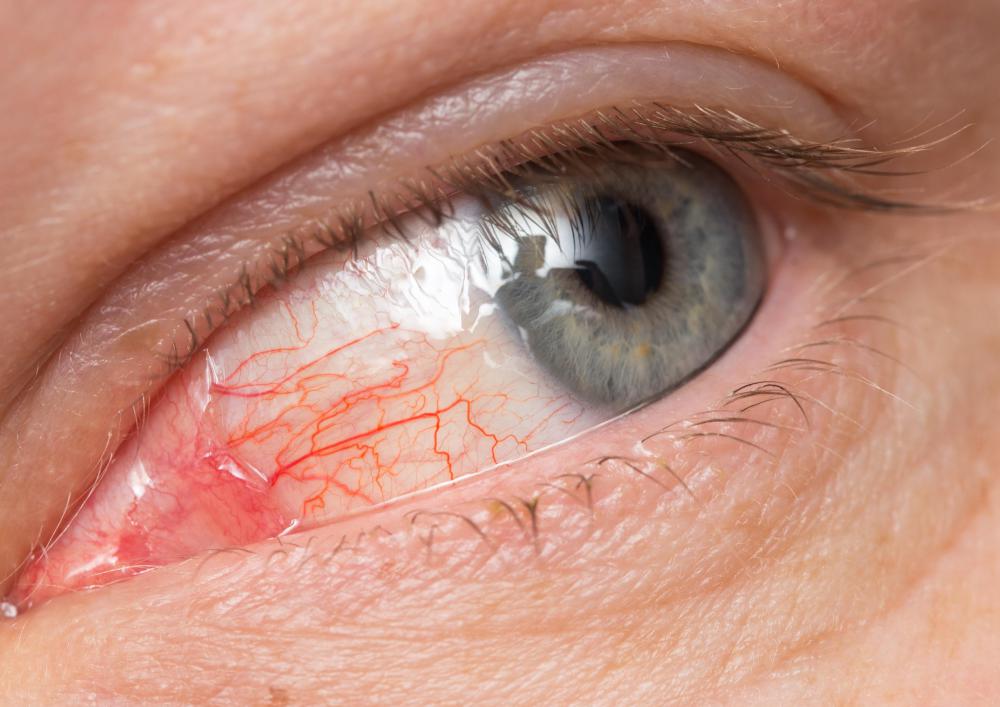At TheHealthBoard, we're committed to delivering accurate, trustworthy information. Our expert-authored content is rigorously fact-checked and sourced from credible authorities. Discover how we uphold the highest standards in providing you with reliable knowledge.
What is Dermatochalasis?
Dermatochalasis is a medical condition in which the skin on the upper or lower eyelids loses its elasticity, causing it to sag and bulge. The condition most commonly associated with old age, though certain inherited conditions, skin disorders, eye injuries, and renal problems can also bring about dermatochalasis. Some individuals suffer from significant vision obstruction and dermatitis, and require surgical procedures to remove excess skin, tighten connective tissue, and relieve irritation. An individual who believes he or she has dermatochalasis should consult a physician, who can check for more serious problems and determine the best option for improving the look and function of the patient's eyes.
As a person gets older, the connective tissue in his or her muscles and skin loses elasticity, resulting wrinkles and flaps of hanging skin. For people with dermatochalasis, stretched connective tissue is most prominent in the upper eyelids, lower eyelids, or both. Individuals with genetic tendencies to sagging skin, dermatological disorders such as Ehlers-Danlos syndrome, or injuries to the eyes and surrounding tissue may also suffer from dermatochalasis.

In most cases, loose skin around the eyes does not affect eye functioning. Protruding skin can be so large, however, that some people have trouble seeing. When the upper eyelids sag, they can obstruct vision and potentially come into contact with the eyes, leading to infection. Skin that falls onto the eyelashes may make it difficult to keep the eyes open, requiring the individual to constantly raise his or her brow to see. In addition, delicate eyelid skin is prone to inflammation, irritation, and swelling. When an individual experiences health problems related to dermatochalasis, he or she may need to have loose skin surgically tightened and or completely removed.

The most common cosmetic surgery procedure for reducing the appearance of sagging eyelids is known as blepharoplasty, in which a skilled surgeon makes a small incision just above the upper eyelid or below the lower eyelid, and removes excess fat, skin, and loose muscle tissue. He or she then attaches the remaining skin to intact tendons and healthy connective tissue in the face. The eyelid is stitched back together and given an average of one to two weeks to heal. Most patients who undergo blepharoplasty are relieved of their functional and cosmetic eye problems within about a month of their surgeries. It is common for signs of dermatochalasis to return over time, necessitating additional surgeries to keep skin looking and feeling firm.
AS FEATURED ON:
AS FEATURED ON:
















Discussion Comments
Dermatochalasis is a sad condition. It isn't life threatening, but it would be hard to deal with. Wrinkles and folds on most of the body don't have such an effect on looks and function of a body part as dermatochalasis.
Recently, when I visited my mother in a rehab center, there were two older ladies there who had this condition. The loose skin hanging down seemed to make it difficult for them to see properly. They kept pushing the skin folds back up.
These women were quite old. I wonder if surgery would be too difficult and risky for them since the condition can very likely return.
Post your comments